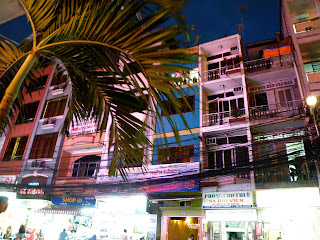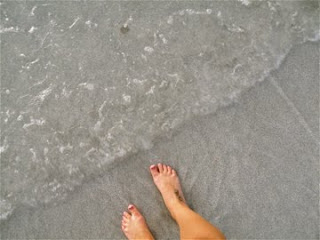India’s census information reveals that just over a quarter of the women in the country are employed by the labor force. Most of these women are cultivators, or somehow involved in the agricultural industry. One third of them are self-employed. (http://ideas.repec.org/p/ess/wpaper/id2064.html)
In a country where one is likely to see only one or two women out of every five men on the street, the stats about women’s employment make complete sense. One out of five is not a documented fact, but merely a personal observation from roaming the streets of Chennai. I concluded that the many women I did not see were indoors, at home doing unpaid domestic work.
I was wrong. At the end of the day I found a great number of them at the Working Women’s Forum. And they probably would have been irritated to know that I thought they’d been cooking and cleaning all morning.
The Working Women’s Forum (WWF) is an Indian grassroots nonprofit that helps women get grants to start their own businesses or go to college. It also provides job training and banking education, so that women can take control of their finances and eliminate debt. It helps them get involved with unions, sign up for inexpensive healthcare and provides education about reproductive rights and care.
The group of women at the organization dressed in vibrant wrap dresses, or saris, and many of them had gold jewels pierced into their noses and ears. They came into the conference room like a rainbow peeks out from the rain, their gems sparkling in the light from the windows. They were incredibly gracious, absolutely insisting that fellow travelers and myself sit in chairs while they all teemed onto the floor. They were also incredibly warm; they communicated with their huge smiles, which I received and reciprocated. None of us spoke each other’s language. I felt welcome nonetheless.
Via translation, the women engaged us in a question and answer session. They asked questions about what jobs women do in the United States, and what roles they fill in families. They wanted to know if men or women controlled household funds, and what single moms did in our culture. When it was our turn to ask questions, here are some of the responses we got in return.
Who works more in your families- women or men?
Women, by a long shot. Many women come to the forum because their husbands aren’t working and they need to sustain their families. Women often work their jobs and then come home to care for children, cook and clean. We don’t know how we find all the time, but we make it work.
What do your husbands think about your involvement in this organization?
Many of them encourage us to come and get involved. Others are threatened by our empowerment. But no matter what, they shut their mouths when we bring home money at the end of the day.
Our mother and father-in-laws present greater opposition. They are more traditional, and feel as if their sons need to be the heads of the household.
When do women in India usually get married?
Usually around the age of twenty, but the socialized limit is 21. One woman here got married when she was ten.
And how many babies do they typically have?
We are different than many women because we know about family planning now. We all hope to have one or two, so that we can provide better for less people. The Working Women’s Forum sponsors a family planning project that many of us volunteer for.
The WWF provides the means to get loans, but do they ever give out actual funds?
No. Sometimes women’s immediate response to cash in hand is to bring it straight to their husbands. That defeats the point.
What are some of the biggest challenges that you face in your every day lives?
The same challenges that you face. Sure there are financial issues, violence, poverty, our children, and many other social problems that lack public solutions, but our biggest challenges are internal rather than external. One woman here pushes a breakfast cart for her job. She is often scared that she will be robbed, and sometimes the police wont even let her set up for her sales. Each woman’s challenge is different than the next.
What keeps you coming back to the WWF?
The sense of community. These are our friends, and we bring our children.
What are you doing at WWF today?
(They pull out a bottle and pass it around for us to smell.) We’re teaching a workshop on how to make aromatherapy products and make profit off of them.
Our day at WWF ended with a shared cup of caramel-flavored chai tea, and a hoopla of dancing and singing with the ladies. We hugged and kissed everyone on our way out. I left hoping to one day exhibit some of the strength, and complete gorgeousness, I found in that room.














































